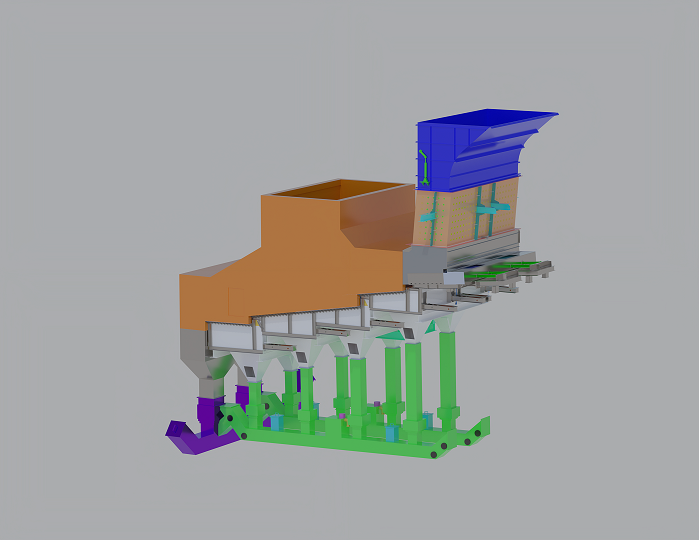Judgment and treatment of abnormal working conditions of grate furnace
In modern industrial production, grate furnaces, as important heat energy conversion equipment, are widely used in the efficient utilization of various energy sources. With the continuous advancement of technology, the operating efficiency and stability of grate furnaces have been significantly improved. However, grate furnaces may still encounter various abnormal conditions in actual operation, which not only affects production efficiency, but also may cause damage to equipment. Therefore, it is very important to judge and deal with these abnormal conditions in a timely manner.
What is a grate furnace?
A grate furnace is a device that uses coal, wood chips, etc. as fuel and delivers the fuel into the furnace for combustion through the mechanical movement of the grate. Its main function is to convert fuel into thermal energy to meet the needs of steam or hot water.
Features of grate furnace:
It has a wide range of applications for garbage. It can be used for both high calorific value garbage with low moisture content in Europe and low calorific value garbage with high moisture content in Asia.
There is no special requirement for the particle size of the garbage entering the furnace. Generally, the garbage sent by the domestic garbage collection truck can be directly sent to the incinerator for combustion without being crushed.
Its combustion efficiency is relatively high, and the combustion efficiency can generally reach 75-78%, and the burnout rate of the slag can reach about 3%.
Main types of abnormal operating conditions of grate furnaces
1. Overheating condition: During the heating and smelting process, if the melting point of the raw material decreases, the use of the original current setting value will cause the raw material to melt quickly and the slurry level to rise rapidly. This abnormal condition is called overheating. Overheating will affect the purity of the product and reduce the product quality. The change in the molten pool level can be judged by observing the brightness change on the surface of the furnace body, and the overheating abnormal condition can be identified by image information processing.
2. Abnormal exhaust condition: A large amount of carbon dioxide gas will be generated during the smelting process, and the gas needs to be exhausted to maintain the pressure balance inside and outside the furnace. When the raw material particle size changes beyond the normal range, the exhaust abnormal condition occurs. The exhaust abnormal condition can be identified by sound information.
3. Abnormal semi-melting condition: Identify the semi-melting abnormal condition by establishing a Bayesian network model.
4. Abnormal underburning condition: It is usually diagnosed by on-site workers regularly observing the characteristics of the furnace shell, but this method is labor-intensive and dangerous, and the accuracy depends on the experience of the operator. The method based on time series image deep learning can be used for automatic, fast and effective diagnosis of the working conditions of the electric magnesium furnace.
5. Hydraulic system failure: When the grate is stuck or the hydraulic system fails, timely measures should be taken to deal with it.
6. The temperature of the outer wall of the incinerator rises: When the refractory material in the furnace is damaged, the boiler evaporation volume should be reduced, the excess air coefficient should be appropriately increased, and the furnace should be stopped if necessary.
7. Waste heat boiler coking: When the flue gas temperature of each part rises, the negative pressure in the furnace decreases, and the negative pressure in front of the induced draft fan increases, the excess air volume should be appropriately increased, the coke slag should be removed in time to prevent it from forming large lumps, and the garbage incineration volume per unit time should be appropriately reduced. If necessary, the furnace should be stopped.





